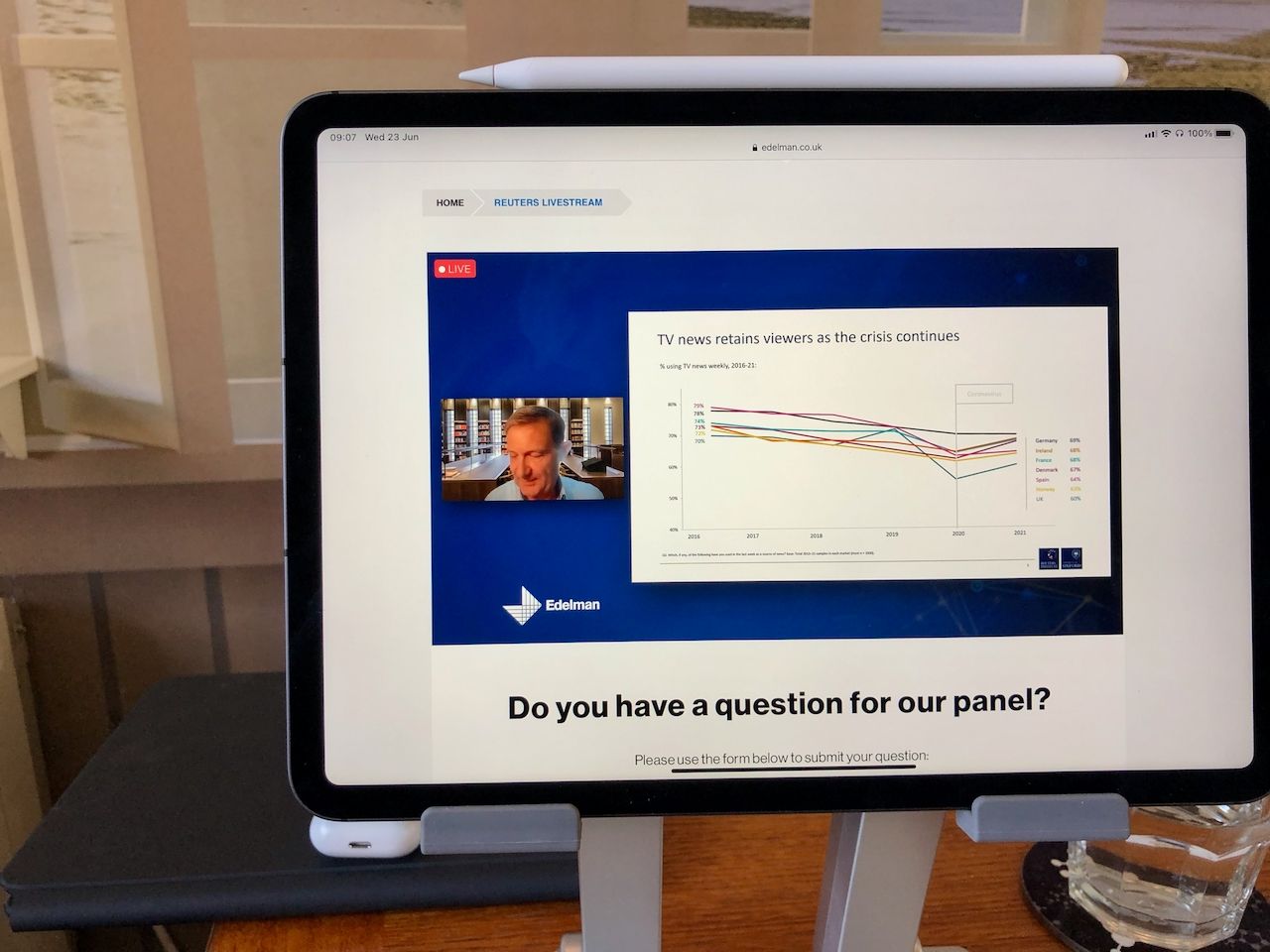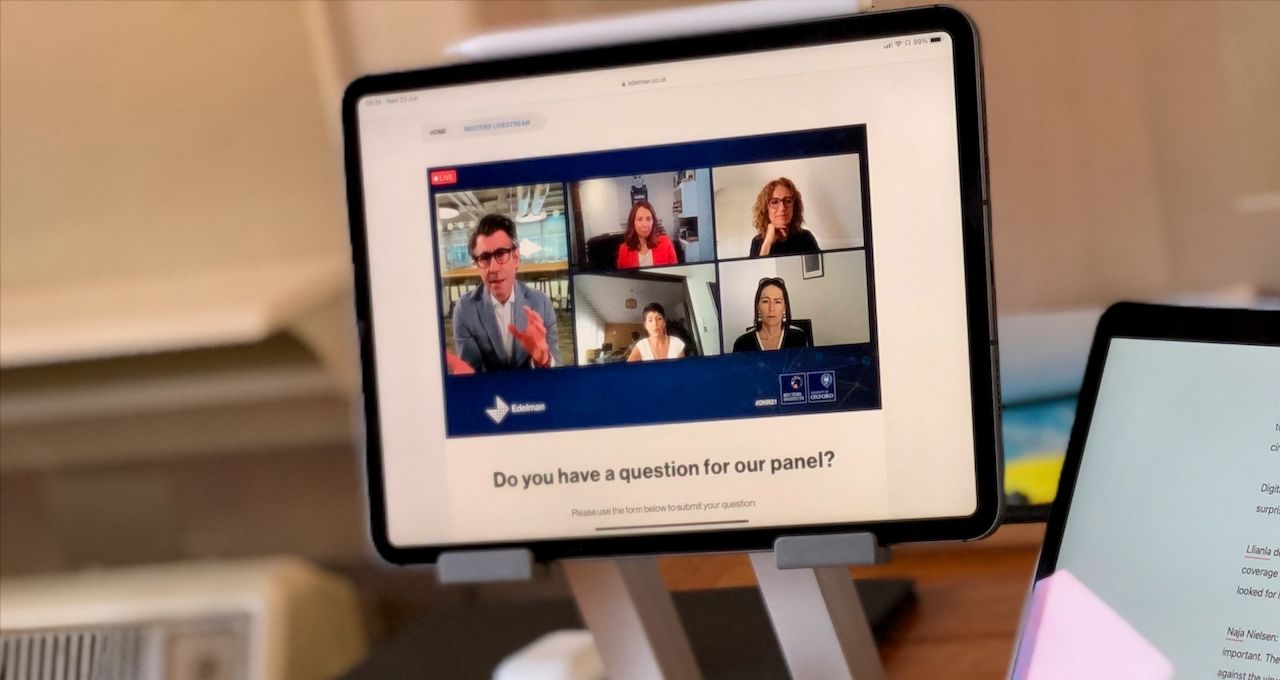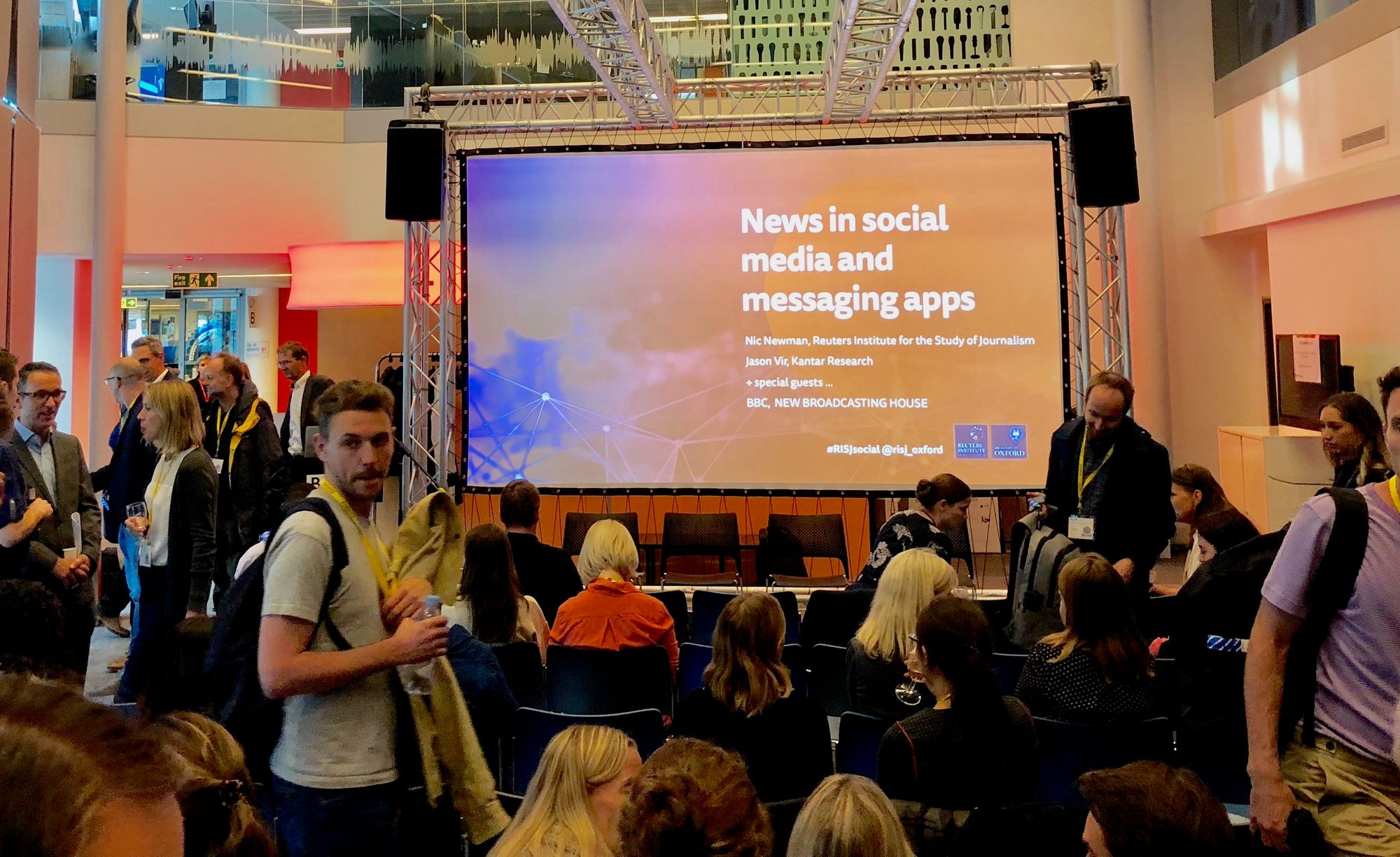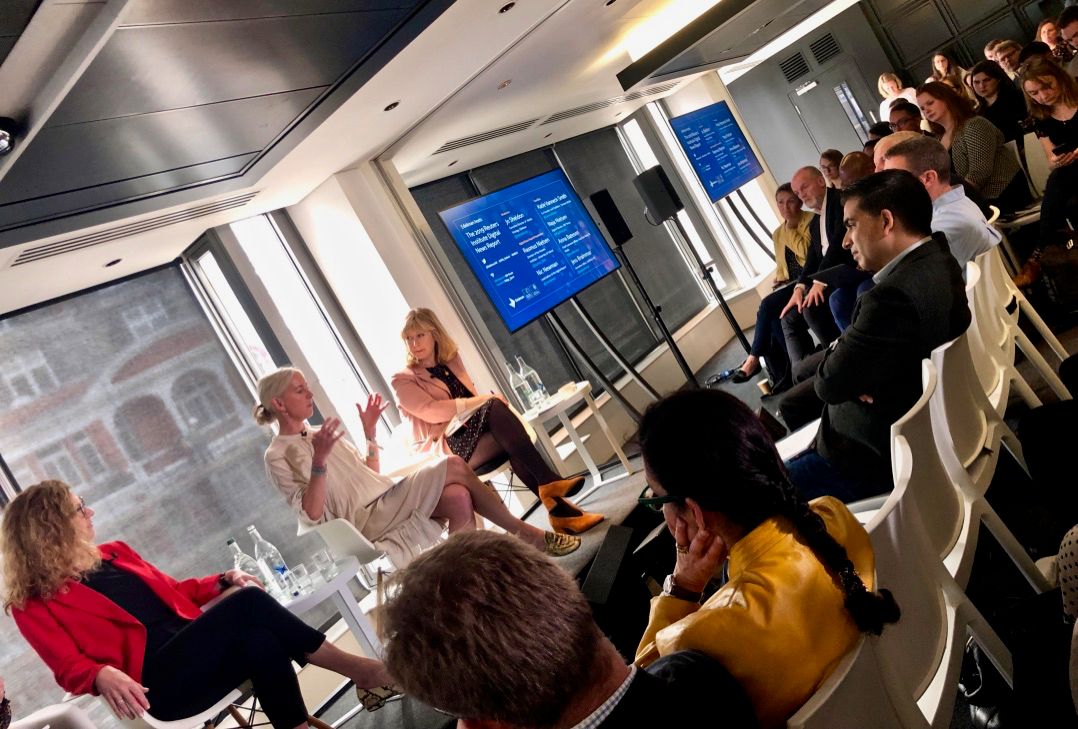
Digital News Report 2021: a good crisis for the media?
Four European journalists discuss the findings of the latest edition of the annual research into news, and how it compares with their own titles' pandemic experiences.
The annual Reuters Institute Digital News Report launched today. Its tenth edition might well prove to be one of the most pivotal because it’s the first to capture the changed wrought to the media industry by the Covid-19 pandemic. I’ll be unpicking and analysing the report in the coming days, but this morning Reuters held a virtual launch event for the report.
Here are my notes both from the summary delivered by Nic Newman, the report’s lead author, and from a fascinating panel discussion that followed.
Nic Newman’s key findings

Well, that was one hell of a year, wasn't it? Nic Newman did a good job of rounding up the key findings before the panel discussion kicked off. Some of the story was familiar: the pandemic has accelerated the decline of print. Online, it’s been more of a mixed bag. Some brands are up and some down, but large, trusted news brands did disproportionally well. There are strong signs of a consolidation of news power in a few big players.
There’s some good news: globally, journalists aren’t the people the public are most worried about in the spread of false news, for example. Politicians are seen as being more responsible.
Polarisation patterns in news
Nic also talked briefly about the work they’ve done in polarisation in news. There are some notable disparities. People on the political right in the US and Germany feel news coverage is unfair, while in the UK it’s people on the left most likely to think it’s biased against them. Globally, young women feel coverage is less fair. And even within countries, there’s a marked geographical split. Trust in news decline markedly the further north you move in England, for instance. That looks like the consequence of a media industry so concentrated in London to me.
And people are paying for news: 21% of people in the US, and 28% are paying in Norway. The UK is low at 8% — most people here are still reluctant to pay.
Fewer people pay for online news in the UK (8%) than in the US (21%), France (11%), Germany (9%), Ireland (16%), Italy (13%), Norway (45%), Spain (12%). The BBC effect... #DNR21
— Sarah Marshall (@SarahMarshall) June 23, 2021
Norway is a fascinating outlier: 57% of subscribers pay for a local publication in Norway — while it’s just 3% in the UK! Some Norwegians are paying for both local and national news subscriptions.
Panel Discussion
Panel:
- Roula Khalaf, editor, Financial Times
- Naja Nielsen, digital director, BBC News
- Rosalia Lloret, CEO, elDiario.es
- Alexandra Föderl-Schmid, deputy editor-in-chief, Süddeutsche Zeitung
- Chair: Ed Williams, president and CEO, Edelman EMEA
Media in a pandemic age
Roula Khalaf kicked off the discussion by harking back to the early days of the pandemic, a year ago, when they did see a collapse in circulation and advertising. The pandemic has reinforced that the future is digital — but without killing print, she suggested. Their weekend print sales rose and continue to rise. She suggests that the stable state is looking like a smaller weekday circulation, with a larger and growing circulation on weekends.
This is quite fascinating: my instinct is that we’re seeing people choosing to retreat to print at weekends, as an escape from a working life that is entirely screen-centric. The pandemic has been going on long enough that this might very well become an established habit.
Digital subs are also still strong at the FT, with a big jump in digital advertising, that was a surprise to Khalaf.
Local resurgence

Lloret described huge growth in traffic to their Covid-related pages. But their local coverage — from their 13 regional editions — was also significant, as people looked for information specifically about where they lived. This, coupled with the Norway figures above, suggests strongly to me that the problem isn’t the demand for local news — it’s the way we’re supplying it now.
During the pandemic our women readership grew, says @rlloret from @eldiarioes at #DNR21 launch event - now 51% women whereas before it was more men than women - v interesting and it would be great to know more!
— Emma Goodman (@Emmamagoodman) June 23, 2021
A similar story of increased interest in local information emerged from Nielsen’s comments. “Before the pandemic, I had people asking me if news was still important,” she said. “The pandemic has changed that. Our awareness of the global struggle against the virus is down to journalism. We should be proud of ourselves.”
BBC News has grown from being used by 30% of the population weekly to 40%. Younger people and non-traditional news readers have been among the new people added. There were half a billion visits to the BBC’s interactive showing cases by postcode.
“Digital can offer services that aren’t part of a traditional story. It can provide information that is really useful to you.”
Two Tier News?
There was an understandable caution about a news world dominated by a few, expensive big news players, which Newman’s research suggests is emerging.
As Khalaf put it: “Are we moving into a world with a few dominant news organisations trusted by most, but which others are suspicious about, because of their power?”
It appears to be the case — and that will leave out those who can’t afford those news sources.
She saw some hope in the streaming TV model: if we do move into a world like video streaming where you get subscriptions to several services, you’re getting a broader range of views. The challenge is in reaching younger audiences and preparing them to be the subscribers of the future. “We have to go to them,” she said.
The FT has a schools programme, which offers them free access. They have similar programmes for universities. They are also considering an “FT Select” app, which gives a smaller selection of news to a wider group of people, more cheaply.
Audience Engagement growth
One consistent theme was a need for an increased focus on audience engagement, as we switch to a reader revenue model.
“We have to be present on social media,” said Khalaf. “Why do we have such a big audience engagement department? We need to be there. We have young journalists who are becoming stars, like John Burn-Murdoch. Data attracts young audiences. Cool, edgy video attracts young audiences. Podcasts are important for reaching people in the US.”
This was echoed by Föderl-Schmid, who was adamant that we need to be more engaged with our readers — and that we can’t afford to be a one-way channel of communications.
“We, as editors, need to answer questions from our readers,” she said. “It’s an important step to get our readers involved in our ecosystem, to keep them as readers and subscribers.”
Facing the post-pandemic future
Nielsen cautioned that the pandemic was not yet over: people have been and are still afraid for their lives in some countries. But that’s provided a damn good reason for them to look for information. And she found a lesson in that:
“We’ve not taken the readers’ needs seriously enough. We’ve not been willing enough to move the resources around to serve reader needs.”
We have to be more curious than ever before about the real needs of the audience - really knowing what they need and getting it to them when they need it, says @NajaNielsen2 from @BBCNews at #DNR21 launch event
— Emma Goodman (@Emmamagoodman) June 23, 2021
Föderl-Schmid was optimistic about the future, and more so than she has been in recent years, despite the fall in circulation.
“It was a good crisis for media companies because it really accelerated the trend to digital subscriptions,” she said. “Our challenge now is to keep those new readers — and to bring in new, young readers for the sake of our democracy.”
Lloret concurred:
“This focus on reader revenue is going to continue, and that’s good. We can concentrate on the quality of content to convince readers to become subscribers.”
The Reuters #DNR21 is as insightful as ever but this narrative from many on panel that the pandemic has been a "good crisis" for media is odd. Yes, trust and audiences are up but beyond heavily established media in tiny no. of markets, media revenues globally are in deep crisis. https://t.co/j0LA43v45t
— JamesMDeane (@JamesMDeane) June 23, 2021
You can:
- Download the Digital News Report 2021 direct from the Reuters Institute.
- Explore it through an interactive.
- Listen to a podcast about it.
- Or even watch this short video:
Sign up for e-mail updates
Join the newsletter to receive the latest posts in your inbox.










